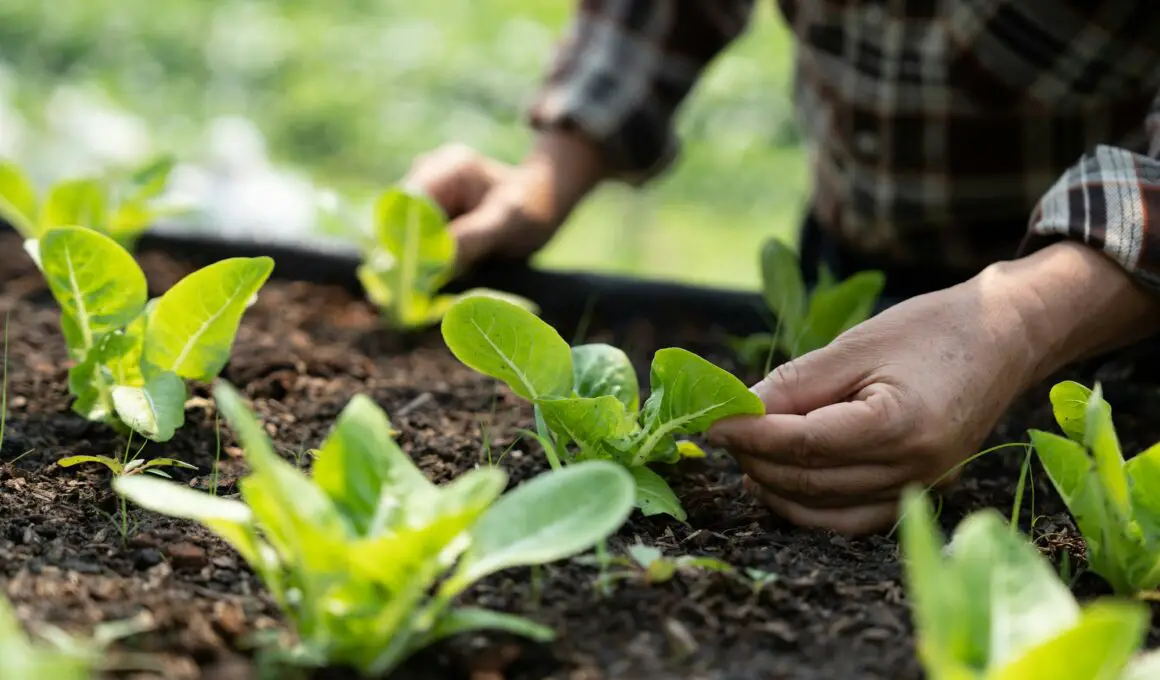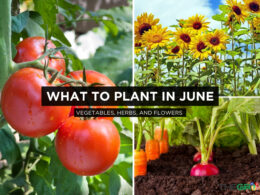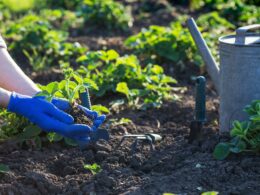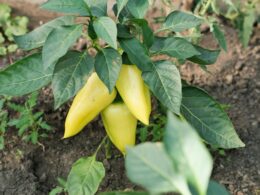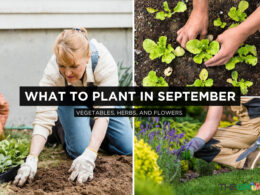In This Article Show
Growing lettuce at home is a rewarding endeavor for both novice and seasoned gardeners alike. Known for its rapid growth cycle, lettuce can be a delightful addition to your garden, offering fresh, crisp greens right from your backyard. In this post, I’ll share five essential tips that will help speed up your lettuce growth, ensuring you can enjoy your harvest sooner.
Lettuce, a versatile leafy green, thrives under specific conditions that can easily be managed in a home setting. By focusing on key aspects like soil quality, variety selection, and proper care techniques, you can significantly enhance the growth rate of your lettuce plants.
Whether you’re looking to add a fresh touch to your salads or simply enjoy the benefits of home gardening, these tips are designed to provide practical advice that leverages my 13 years of gardening experience.
Optimize Your Soil
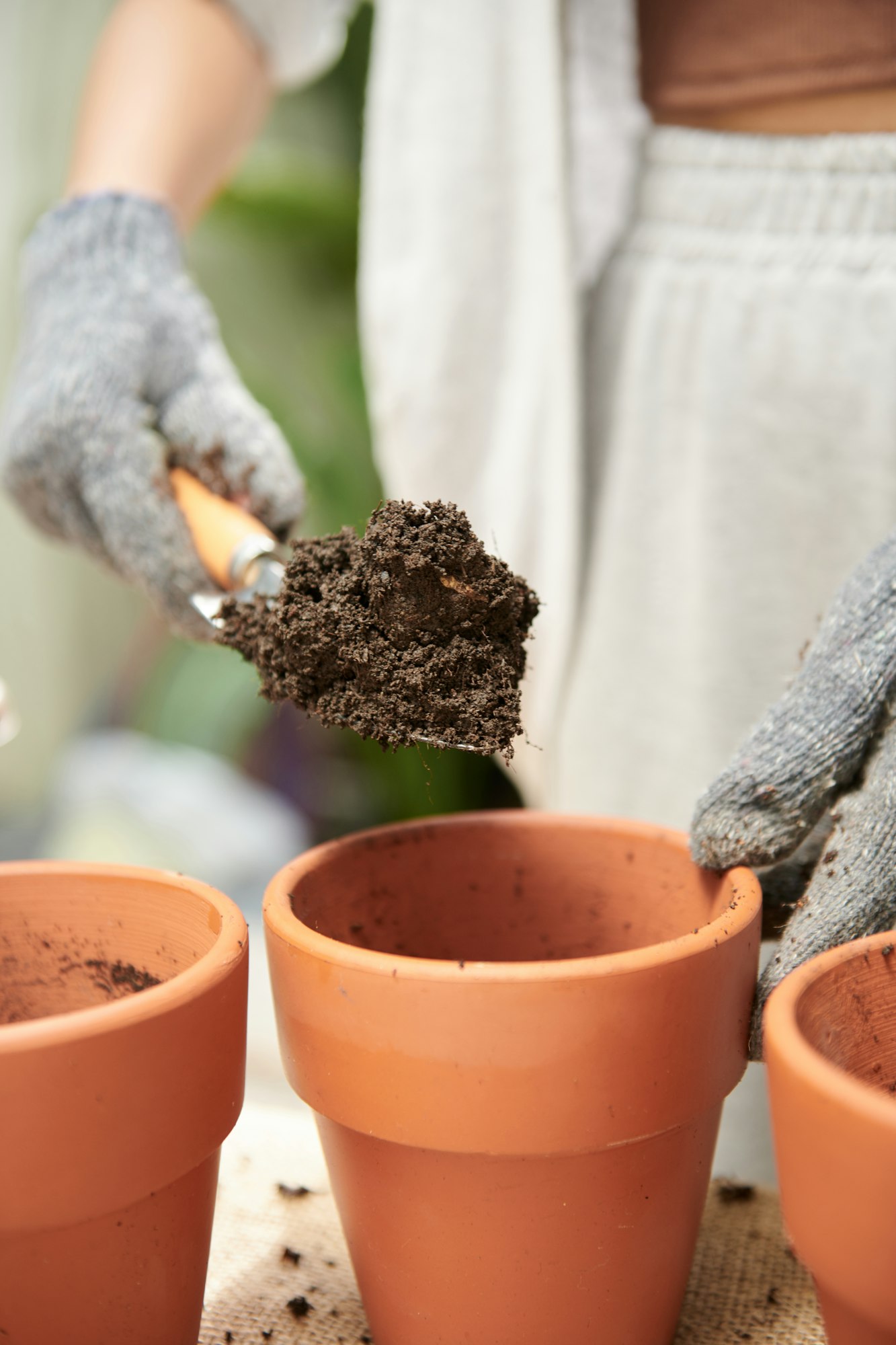
For lettuce to thrive and grow quickly, the foundation begins with rich, well-draining soil. Lettuce roots prefer a moist environment, but they also need adequate drainage to prevent issues like root rot and other fungal diseases.
To achieve this balance, it’s crucial to work organic matter into your soil. Adding compost not only improves soil structure and drainage but also enhances its nutrient content, which is vital for rapid and healthy growth.
Compost provides a slow-release source of essential nutrients, which supports steady growth throughout the growing season.
Get Gardening For Beginners
Our new EBOOK shows newcomers and green thumbs alike a step by step guide to growing the garden of their dreams.
If your garden soil is particularly clayey or sandy, consider incorporating aged manure or peat moss as well, which can further help to maintain the ideal moisture and nutrient balance. By creating a rich and hospitable soil environment, you set the stage for your lettuce to grow faster and healthier.
Choose the Right Lettuce Variety
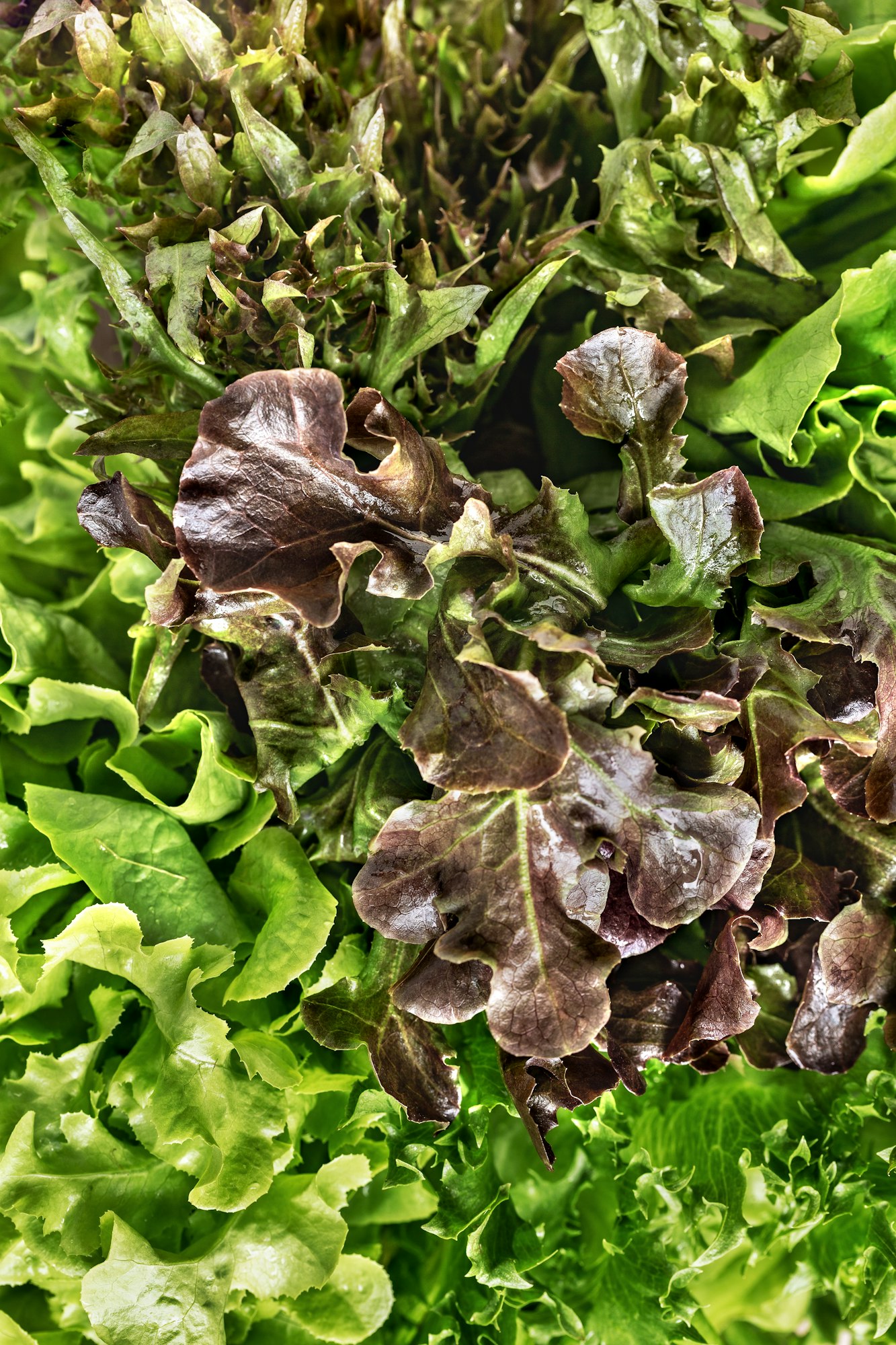
Selecting the right variety of lettuce can greatly influence how quickly you can harvest your crop. Lettuce comes in several types, each with its own set of characteristics and growth rates. For those looking to harvest lettuce quickly, considering the maturity time of different varieties is key.
Among the fastest-growing lettuce varieties are leaf lettuces, such as ‘Oakleaf’ and ‘Lollo Rosso’, which can be ready to start harvesting as little as 30 days from planting. These types do not form tight heads, which means you can begin harvesting the outer leaves while the rest of the plant continues to grow. This method allows for a prolonged yield from a single plant.
Another quick option is the ‘Buttercrunch’ variety, a type of butterhead lettuce. It has a slightly longer maturity time than leaf lettuce but offers a tender texture and sweet flavor, making it a popular choice for gardeners and chefs alike. It can generally be harvested around 45 to 55 days after planting.
For those who prefer crisphead varieties, such as iceberg, it’s important to note that these generally take longer to mature. However, choosing a variety like ‘Great Lakes’, which is adapted for quicker growth, can reduce the wait time to about 70 to 75 days.
Provide Adequate Sunlight and Water
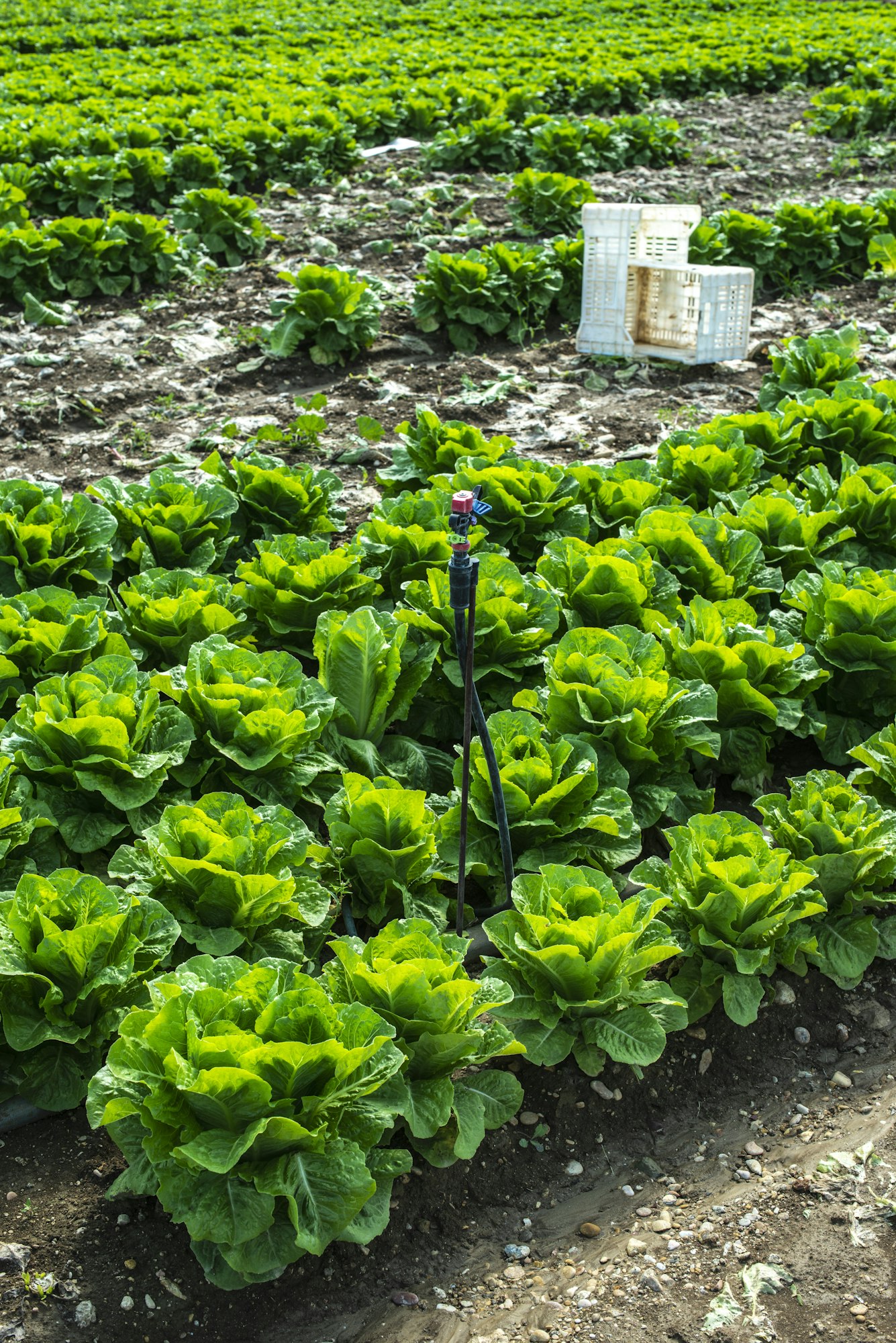
Sunlight and water are fundamental to the fast growth of lettuce, but getting the balance right is crucial. Lettuce plants thrive in full to partial sunlight, requiring at least 4-6 hours of direct sunlight each day. However, in hotter climates, some afternoon shade can prevent the plants from wilting or bolting (going to seed prematurely), which prolongs their growing season and improves yield.
When it comes to watering, lettuce has shallow roots which makes it sensitive to both drought and waterlogging. The key is to maintain consistently moist soil without letting it become soggy. A regular, gentle watering routine is essential, especially in dry weather.
Get Gardening For Beginners
Our new EBOOK shows newcomers and green thumbs alike a step by step guide to growing the garden of their dreams.
Using a soaker hose or drip irrigation can be very effective, as these systems deliver water directly to the soil, minimizing evaporation and keeping the leaves dry, which reduces the risk of leaf diseases.
Mulching around your lettuce plants can also help retain soil moisture and keep the root environment cool and moist. Organic mulches like straw or shredded bark not only conserve water but also add nutrients to the soil as they decompose.
For the best growth, ensure that the soil is never allowed to dry out completely, but also avoid overwatering which can lead to poor root health and reduce the quality of your lettuce.
Use a Fertilizer Strategy
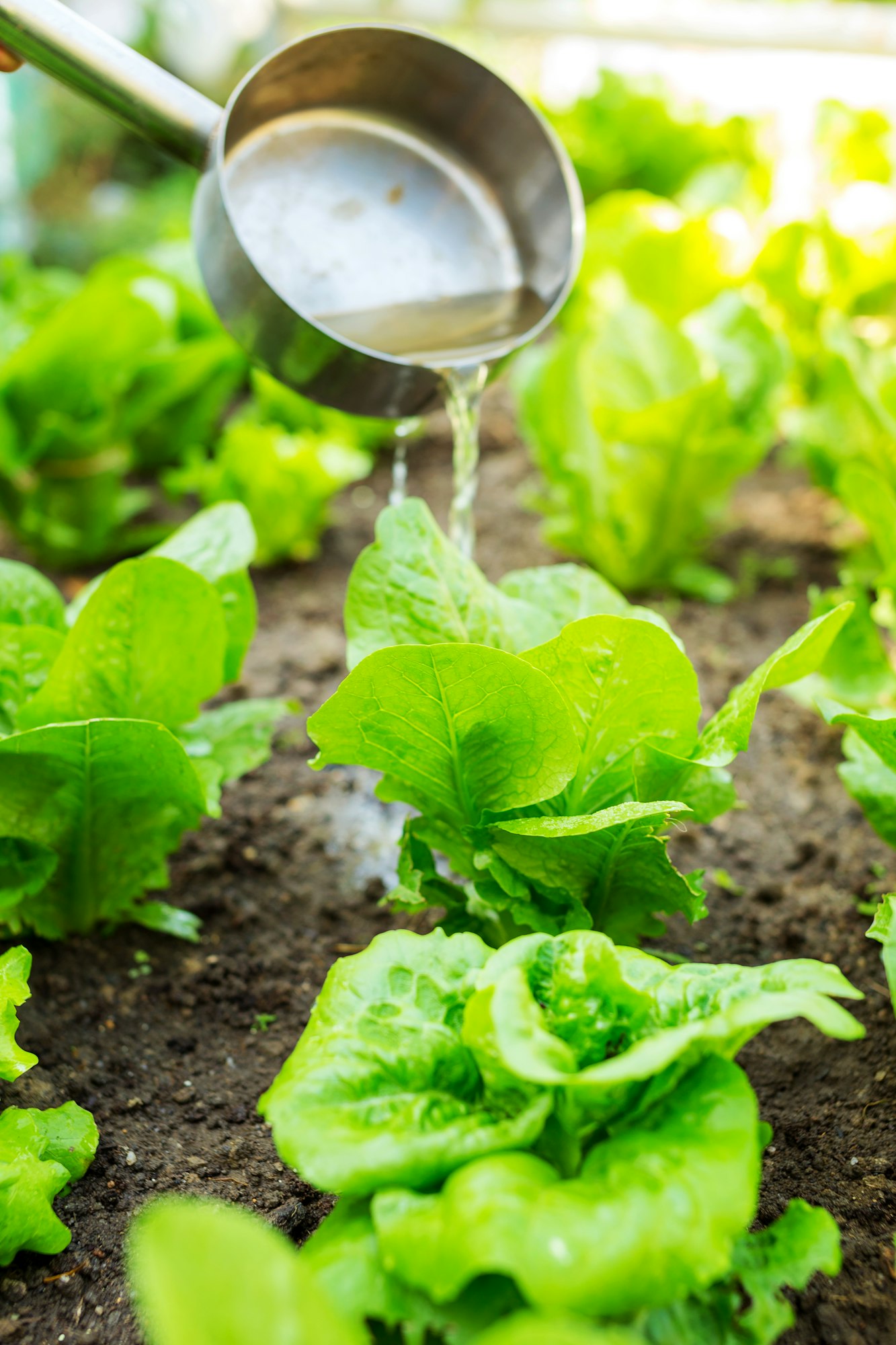
Providing balanced nutrition is crucial for the fast and healthy growth of lettuce, as it helps ensure that the plants have access to essential nutrients throughout their growth cycle. Lettuce benefits particularly from fertilizers rich in nitrogen, which promotes lush, leafy growth, and potassium, which aids in root development and overall plant health.
Organic fertilizers are highly recommended for growing lettuce because they release nutrients slowly, reducing the risk of over-fertilization and providing a more constant nutrient supply to the plants.
Well-composted manure, seaweed extracts, fish emulsion, and blood meal are excellent choices. These fertilizers not only feed the lettuce but also enhance the soil structure and its microbial life, contributing to the overall vitality of your garden.
For the best results, incorporate a balanced organic fertilizer into the soil a week or two before planting your lettuce. As the plants grow, you can supplement with additional feedings.
Applying a liquid organic fertilizer every two to three weeks can be particularly effective, as it provides nutrients directly to the roots and can be easily adjusted if the plants need a bit more or less feeding depending on their appearance and growth rate.
Practice Succession Planting

Succession planting is a strategic approach to garden planning that ensures a continuous harvest of lettuce throughout the growing season. By staggering the planting of your lettuce seeds or seedlings every two to three weeks, you can avoid having all your lettuce become ready for harvest at once.
This method is particularly effective with lettuce due to its quick growing cycle and the fact that it can be harvested at several stages of its growth.
To implement succession planting in your home garden, start by choosing several varieties of lettuce that mature at different rates, as discussed earlier. This variety will extend the range of your harvesting period. Here’s how to set up a basic succession planting schedule:
1. Prepare Your Soil
Before you begin, make sure your garden bed is well-prepared with rich, loose soil—ideally enhanced with organic compost. This preparation should support multiple rounds of planting and harvesting.
2. First Planting
Plant your first set of lettuce seeds or seedlings according to the package directions or the specific needs of the variety.
3. Stagger Additional Plantings
Every two to three weeks, plant additional seeds or seedlings in different parts of your garden or bed. The key is to have new plants starting as older ones are reaching maturity.
4. Maintain Good Care Practices
As your lettuce plants grow, maintain consistent care in terms of watering, feeding, and protecting them from pests. This care will ensure each batch grows optimally.
5. Harvest Gradually
Begin harvesting outer leaves as they reach a usable size, especially for leaf varieties, or wait until head-forming varieties are fully mature. As you harvest, it makes room and provides more nutrients and sunlight for younger plants.
6. Monitor and Adjust
Keep an eye on your plant’s growth and adjust your planting intervals if needed. If you notice that your plants are maturing too quickly or too slowly, modify your watering or fertilizing routines accordingly.





